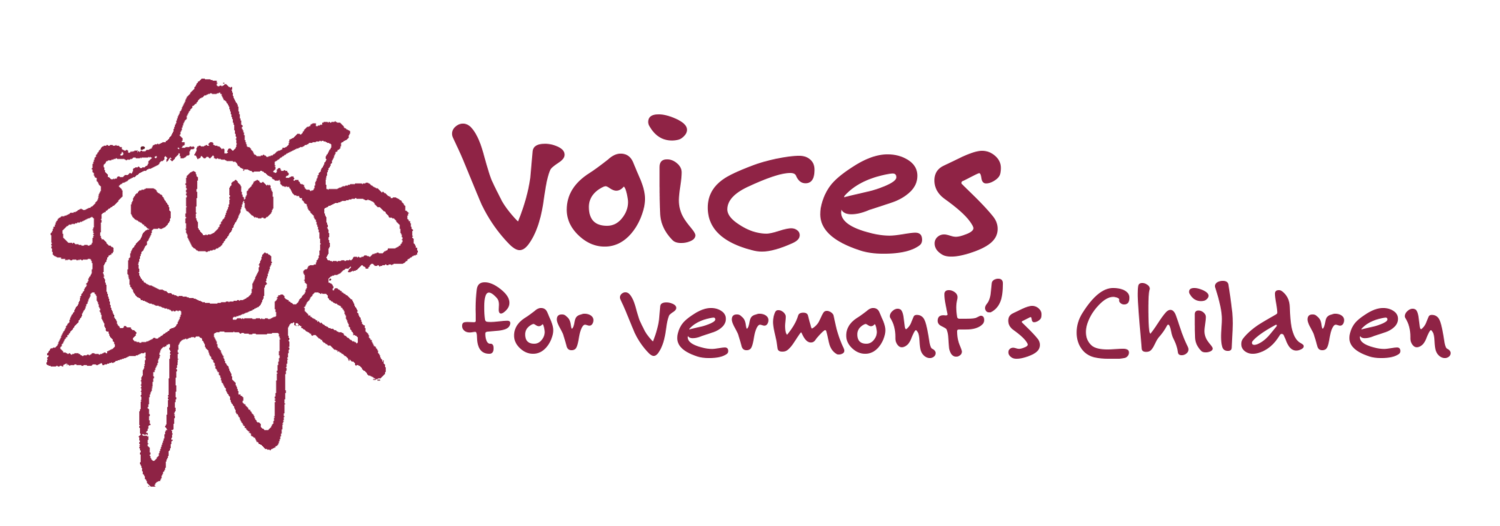New 2018 Child Well-being Rankings are Here!
This year, Vermont ranks eighth for overall child well-being, according to the 2018 KIDS COUNT® Data Book released today by the Annie E. Casey Foundation.
The annual KIDS COUNT Data Book uses 16 indicators to rank each state across four domains — health, education, economic well-being and family and community — as an assessment of child well-being. While Vermont compares favorably in the domains of education, health, and family and community, the state’s relatively low rankings in the economic well-being domain point to similar trends in inequality as are seen nationwide.
Vermont ranks:
- Third in the family and community domain. The teen birth rate in the state is the fourth lowest in the country. Only 1 percent of kids — the lowest rate in the United States — live in neighborhoods with poverty rates of 30 percent or more. Vermont is 23rd for the percentage of kids in families headed by a single parent, but only 6 percent of kids live in households headed by someone who doesn’t have at least a high-school diploma.
- Fifth in education. Vermont ranks among the top 10 states in the nation for all four indicators in this domain: 53 percent of 3- and 4-year-olds attend preschool and 88 percent of high-school students graduate on time; and Vermont ranks third among states for proficiency on the National Assessment of Educational Progress (NAEP) in reading and 10th for math.
- 10th in health. Only 2 percent of children in Vermont lack health insurance. The rate of teens who have abused drugs or alcohol in the past year is the same as the country as a whole — 5 percent. Vermont ranks 13th for child and teen mortality. The percentage of babies born at a low birthweight — 6.9 percent —remains consistently below the national rate.
- 26th in economic well-being. Vermont ranks 16th in the nation for the rate of kids in poverty (15 percent). In a related indicator, 27 percent of kids live in households where no parent has full-time, year-round employment, which puts the state at 23rd for that indicator. Thirty percent of children live in households spending more than 30 percent of their income on housing, placing Vermont in 29th place for this “high-housing cost burden.” And 7 percent of young people ages 16 to 19 are neither attending school nor working —giving Vermont a rank of 23rd in this indicator and an increase from previous years.
In addition to the rankings, this year’s Data Book also draws attention to an issue that has advocates concerned: the importance of the census, specifically the 2020 decennial census.
This once-a-decade count is the basis for funding numerous federal programs in states and communities. In 2015, almost $400 million was distributed to Vermont via programs like Medicaid for children, SNAP, WIC, the school lunch program and others. Young children have historically been undercounted in the census. When children aren’t counted, the programs that serve them are underfunded.
“This issue isn’t just about compiling data. It’s actually fraught with the most critical issues we are facing: inclusiveness, democracy, privacy and money,” said Sarah Teel, research director at Voices for Vermont’s Children. Much of the concern focuses on the addition of a citizenship question to the 2020 census — a last-minute decision by the Trump administration that is being challenged by multiple lawsuits. “If the census is designed to discourage people from participating, as it appears this one may be, it amounts to deliberate disenfranchisement and disregard,” said Teel.
The census also determines congressional representation and electoral votes for states and is used to draw state and local voting districts. For these reasons, a census that doesn’t count substantial numbers of people — who may be “hard to count” for a variety of reasons — also threatens a fair and representative democracy.
Low-income children, children of color and kids living in immigrant families and in rural areas stand to be disproportionately undercounted, while also having the most to lose as vital programs face reductions in funding and undercounted people and families lose their share of political representation.
Laura Speer, associate director for policy reform and advocacy at the Casey Foundation, said reliable data, particularly census data, are critical to informing decisions that improve the lives of America’s children. “An inaccurate census threatens to undermine essential resources for communities and erode many of the advancements made in recent years for our children — particularly children of color — for years to come,” Speer said.
The 2018 KIDS COUNT® Data Book is available at www.aecf.org/databook, which also contains the most recent national, state and local data on hundreds of indicators of child well-being. Journalists interested in creating maps, graphs and rankings in stories about the Data Book can use the KIDS COUNT Data Center at datacenter.kidscount.org.
About Voices for Vermont’s Children
Voices for Vermont’s Children is a statewide, multi-issue, independent nonprofit that promotes public policy to enhance the lives of children and youth in Vermont. For more information, visit www.voicesforvtkids.org. Follow Voices for Vermont’s Children and this issue on Twitter @voices4vtkids and on Facebook.
About the Annie E. Casey Foundation
The Annie E. Casey Foundation creates a brighter future for the nation’s children by developing solutions to strengthen families, build paths to economic opportunity and transform struggling communities into safer and healthier places to live, work and grow. For more information, visit www.aecf.org. KIDS COUNT® is a registered trademark of the Annie E. Casey Foundation.
